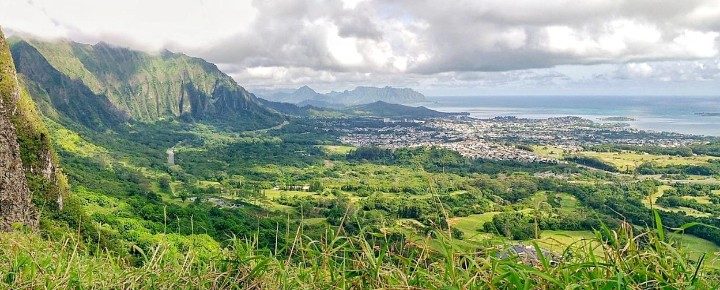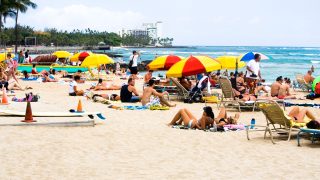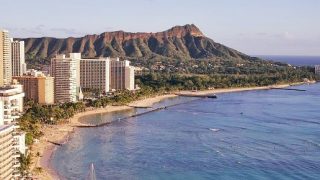The subject of Hawaii visitor fees couldn’t be more at the forefront of travelers minds. It has those of us who live here thinking about it as well. While it may be just fine to levy fees and it isn’t unusual for other states to charge more for visitors than for residents (see list below), something’s up here that warrants a deeper look.
Hawaii is implementing two-tier fee systems, wherein visitors are charged more than residents for the same service. The state, other states, and other places around the world are also doing so, in part as a way of developing more sustainable tourism and in theory protecting natural resources. Too many visitors have trampled iconic places in Hawaii, including the north shore of Kauai, and Oahu’s Hanauma Bay and Diamond Head State Park, just to name a few.
We were somehow blindsided by one fee, below, that we didn’t recall, albeit not new. We’ve been to this place many times before, when traveling around Oahu. What a Hawaii resident had to say about the fee, was eye-opening.
Parking Fee at Nuuanu Pali State Wayside Viewpoint on Oahu: $7.50
The state says, “Impressive view of windward Oʻahu from brink of pali (cliffs) at 1200 feet elevation in the Koolau Range.” The overlook is always a nice stop for great views on a clear day. It’s a historic lookout, where the Battle of Nuuanu took place in 1795.
A comment we just received started this in motion: “I went to the Pali look out and saw that there is a 7 dollar and 50 cent charge for parking to go look at a view for ten minutes if that. Being a local this really had me upset. No, as a local I didn’t have to pay. But it angers me to see how the visitors are being taken advantage of; this is outrageous. Pro park is running this parking fee why? And where does this money go? So not cool. This alone would turn me off coming to visit Hawaii.” In 2011, the state started charging visitors a $3 fee to park at the lookout. Residents don’t pay.
The State Parks Assistant Administrator once said, “it’s a pretty lucrative source of income at no expense to the state.” They say that over the decades, the parks’ share of state money has dwindled and that these fees are necessary to maintain the parks.
Restrooms not included.
The state never installed restrooms or running water at the overlook. For years it was a huge problem with not even any porta-potties. Those were subsequently installed, in part using income from visitor parking fees.
Hawaii visitor fees: it’s all about perception and value.
The acceptance of paying Hawaii visitor fees is tied to both empowerment and worth. The act of paying a visitor fee represents an individual’s contribution to the upkeep of a collectively valued resource, which conceptually is more easily endorsed by most people. Visitor fees need to be tied to demonstrably enhancing the quality of the place. Hawaii visitors deserve to be educated about and feel valued for their participation.
It isn’t just about the money. As new visitor fees are implemented, and not just in Hawaii, some care needs to be taken to not create a them vs. us feeling. That doesn’t lead to anything good in a visitor-based economy. Demonstrating the value and importance associated with these fees is of paramount importance to their acceptance everywhere.
17 other states with out-of-state visitor fees.
Other states are moving in the same direction as Hawaii. They don’t seem to make the news to the same degree, however, and the fees we found are largely related to camping, whereas in Hawaii they apply to across a broader range of activities as well.
Examples of other states levying out of state visitor surcharges are Connecticut, Delaware, Idaho , Maine, Massachusetts, Montana, Nevada, New Jersey, New York, Oregon, Pennsylvania, Rhode Island, Vermont, Virginia, Washington, Wisconsin and Wyoming.
ln some of these states, visitors can pay 2 to 3 times what residents pay. In other places, the surcharge is smaller.
Is there a better way to make Hawaii visitor fees work?
Your input on this increasingly important topic is valued.







We noticed during our 12 visits on Maui, Kauai, The Big Island, and Oahu we were charged more for the groceries we purchased than the local residents.During our most recent month stay, the grocery store clerk saw us so often she asked if we had our res card. We saw others using their cards and their purchase totals were significantly lowered. It felt discriminatory, like our dollars aren’t worth as much as their dollars. We felt like foreigners in a State that is part of the USA. Everyone should be told upfront you will pay more for everything if you are not a resident.
The easy answer to this is to get yourself a card, it takes two minutes. Not sure where you’re from but they are ubiquitous in California.
I’ve lived on Hawaii Island 20 years. Yes, I do get a break on my golf rounds. Why? Because the club knows that local golfers are regulars 12 months out of the year, not just the vacation months.
But, I have never had to show a residence card in restaurants, grocery stores, clothing stores, etc. Costco card, the only exception. And I highly doubt that Costco charges more to non-residents.
Unless your post is a spoof to ignite criticism of something that doesn’t exist, I am at a loss to decipher your complaint.
I am a local living in kihei. I’m wondering about a 10% tax on my diving with a local company
I was under the impression the tax is 4.1
Could you please explain this to me
Thank you very much
Hi Pam.
Try contacting the company you’re asking about.
Aloha.
The visitor fees are a killer.
I’m staying at a hotel on Kauai using hotel points but the visitor fees for 6 days are:
Car Rental: $143.88
Hotel: $283.11
Total: $426.99 in fees to stay 6 days.
That’s crazy, dudes and dudettes.
This charging of different rates for residents and visitors has ben going on since at least the late 70s when OR charged out of state people a higher rate in State Parks. In most cases, things like Parks are funded out of general tax monies plus fees, but fees never pay enough. So, a non-resident is not paying as much but are using them. So, while I support the fees, they must go, in full, to actually maintain and improve the parks. In the example from the Pali, I would expect restrooms with running water and drinking water if fees are charged for being there. Personally, my fear is that the fee money will not go to the maintenance and improvement of the parks; it will just allow the general tax support to be switched elsewhere.
We live in Delaware and have traveled a great deal. In fact we have been to all of but 3 of the states mentioned. In no other state have we been so charged. I love Hawai’i. It is the home of 3 of my grandchildren and I have been here nearly 2 dozen times in the last 7 years. If you don’t value the role tourism plays in your economy, you will lose its rewards quickly. I have a personal reason for returning and by now I feel like a kama’aina. But many others do not have the same need to come here.
I believe I have reached a point where after 20 years of traveling to Kauai, I may not visit again.
Many people keep on using a “disneyland” comparison for the islands and feel as though soaking the tourists for cash by charging them at every turn is justified to reduce numbers and support the park system. I cannot disagree that if funding is lacking and it is needed to support the parks, we as visitors do need to pay reasonable fees for access to some areas.
I truly think the general mentality is tourists are not wanted and I think the real reason for the fees is to discourage people from visiting the islands. Locals on here please prove me wrong, but I am no longer feeling aloha.
Like most places with tourism industry, they hate the visitors but love their money.
It’s more nuanced than that, but there is that tension. It’s not an easy issue to address, but it also doesn’t magically solve itself. It takes effort and, yes, some mistakes along the way to get it right.
It’s not apparent that visitors, who are a primary stakeholder in this, have a voice. That guarantees failure. It seems like Hawaii doesn’t care what tourists would prefer to change. So I think you are reading that frustration here.
You are right about that, I was on another forum and someone flat out said the local government met with locals regarding some of the policies and fees that were put into place and as a visitor we have no voice and just have to accept it.
I understand parts of what they are saying, however, in the same discussion I had mentioned how much visitors are already paying taxes, etc. and that questions should raised regarding how money is distributed by the state and how much is being reinvested by corporations, basically, not all of the burden should fall on visitors. They ended up saying, the fees aren’t all about the money, it is to discourage tourism.
Whether all of what was stated is true, it really gave an insight into the mentality.
From the POV of a resident, they would like all the resources that tourists provide without the tourists.
Of course, that’s a silly desire.
If they are trying to maximize income from tourists, they will naturally price some folks out (econ 101). From the POV of a tourist, every dollar spent is a dollar too much.
But to actively discourage rather than improve its main industry seems an odd choice. What do Hawaiians think will happen if there is less tourism?
Jim,
“From the POV of a tourist, every dollar spent is a dollar too much.”
If I (a regular tourist) thought “every” dollar was too much, I could go on much cheaper vacations elsewhere. I choose Hawaii as a once-a-year vacation for 2-3 weeks.
The issue really is targeting tourists with unrealistic fees. Fees, that it seems, are charged either to tourists at a higher rate than residents or not to residents at all.
I think the state has to settle down and treat tourists as welcomed guests. We are not enemies of our fellow Americans who happen to live in Hawaii – we just want a memorable vacation. One that grabs us and says “when can we go to Hawaii again.”
Who do they think keeps their retail stores in business? Are locals buying expensive artwork by local artists? I doubt it but we bought several pieces for dollars into the thousands on our last trip in April, all money going to the artist and the store. If that does not make us welcome, then I don’t know what will. This is in spite of increased hotels, car rentals and taxes. Because we love the culture, we brought some home with us. What bigger compliment would they like from tourists.
I was exaggerating for effect.
But is Hawaii doing all they can to make tourists feel welcome? Many here think that it’s the opposite.
I’ll take it a step further. I’ll argue that visitors have a greater desire to see Hawaii as a paradise than its residents do. I’d bet that more damage is done, per capita, by residents than by tourists.
The people in Waikiki urinating in the alleys aren’t the ones staying in the high rise hotels.
If you want to visit Hawaii, do Oahu for 2 days, and then spend the remainder of your time on Kauai or Kailua-Kona. Kauai is still a very spiritual island, my favorite as my family has been living there since the late 1880s, but Kona is more like old-school Hawaii. The people there are very friendly and welcome tourists who are respectful of the island and people. Just have a good time and don’t be so “mainland arrogant”. If you can handle the rain, Hilo is a wonderful place to visit, too.
Aloha Katman,
I am looking for honest feedback as I am reaching a point where I no longer feel welcome and am questioning visiting Kauai or Hawaii again after 20 years of visiting the island.
On many forums there seems to be an underlying resentment and hatred toward visitors, no matter how respectful we are. It really feels like many feel like they have the right to price gouge us at every turn (getting their 5 pounds of flesh) for visiting. It also seems like some want to treat us like visitors to “Disney” as this narrative keeps getting thrown around.
Is this how Hawaiians truly feel or is this some “bad actors” trying to scare off visitors?
Mahalo
John,
I think all visitors have to make the visit/don’t visit based on their own experiences there and expectations.
My own: those in the hospitality industry treat us just fine (Waikiki/Oahu generally). Others tend to ignore us just as they do back home – that’s all I expect. It’s my vacation, not theirs.
The excitement of Hawaii left a long time ago. But, so what – as long as those you interact with treat you well, how is that any different than any other tourist hot spot in the States.
I say go, if YOU enjoy YOUR vacation, go again. Otherwise, there are 49 other states, plus Puerto Rico, Guam, US Virgin Islands. Not to mention, the most tourist-friendly places like Cancun and the Caribbean.
You are right… and that is a big part of reason I have stopped visiting other forums, it was just too negative and did not reflect the majority of the experiences I have had on island.
I will continue to visit BOH though, there seems to be a much more balanced viewpoint with articles and people commenting.
Most here want the best for Hawaii, even when we disagree.
Jim,
That’s right. And, not just Hawaii, but I want the best, the very best, for our whole country and our international friends.
There is an extension of this spending that should be explored and that is those tourists that come back and back and eventually buy a home, condo, townhouse in the state. They pay extraordinary high property taxes, get none of the Kama’aina rates for golf, restaurants etc but they come often and are there to enjoy the islands…so the cut back or dont come due to hurdles put up to enjoy the islands. If they dont have a car there, they pay car rental fees which now run close to $1000 a week….the islands certainly taking logic and throwing out the door. These second home residents respect the islands, usually over time get involved with non profits/churches etc there and constantly invite others over to enjoy but how can be enjoyed???
John,
I agree… I’ve been visiting the Islands yearly since 1975. I have watched how everything has changed and like Locals, I feel not all changes have been for the betterment of each island. The prices of everything have gone up, but so has everything on the Mainland. I don’t mind paying a bit more for what I use/need on Island, but don’t gouge us! Car and accommodation rentals are getting ridiculous! Why the huge increases?
Personally, I just totally avoid such places. Last time my wife and I visited HI, we left after two days because of the rude treatment by the “natives” – the word “natives” being an apt description. We hopped onto a plane heading for Australia, where we had a marvelous time for six weeks. Our gain, HI’s loss!
Hawaii you got your wish. My family will not visit again. We found San Diego and loved it in March for our month stay. We were also treated very well as Hawaii once did.
Doesn’t matter how rich one is. No one likes to be nickel and dimed.